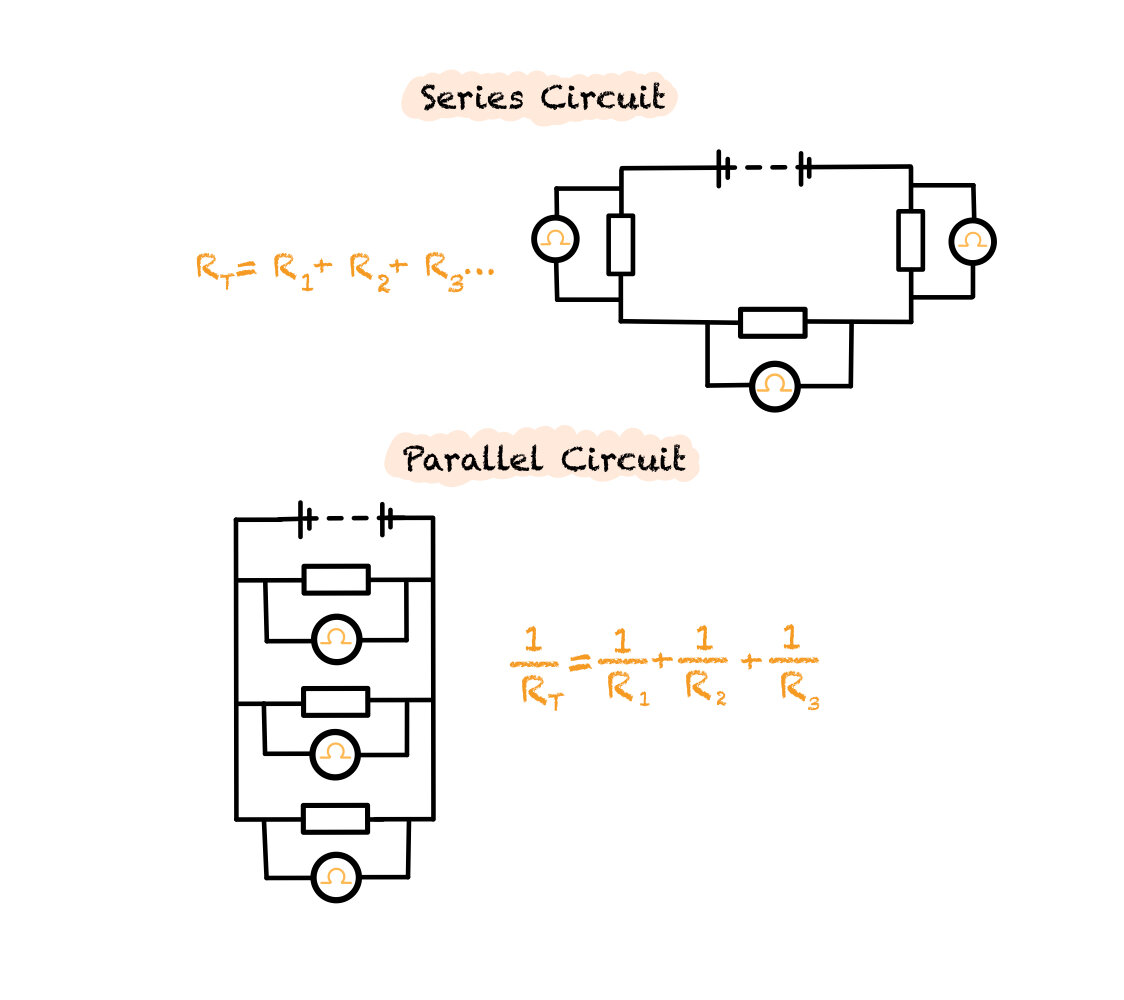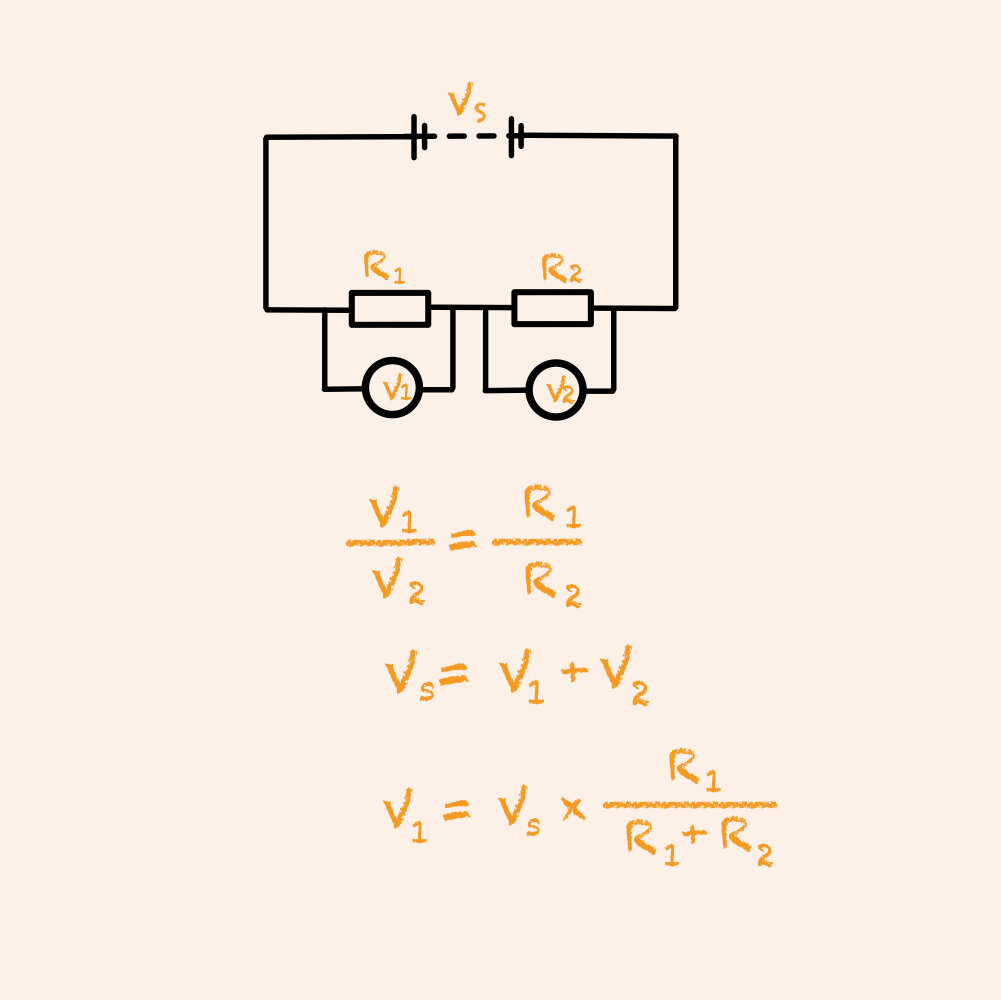Ohm’s Law and Resistance
Resistance is a tightening like stepping on a hose that is trying to push water out. Your foot is the resistor and the hose is the wire. The water is current and the voltage is how high the tap is turned up.
Ohm’s Law
Ohm’s Law is the relationship between Current, Resistance and Voltage. In other words, “The current through a conductor between two points is directly proportional to the voltage across two points.”
Voltage = Current x Resistance.
Current is therefore directionally proportional to Voltage. This can be demonstrated with the given graph.
Calculating Resistance in a Circuit
It is very simple to calculate the total resistance in a series circuit. This is done by simply adding the resistance of each component together to get the total.
Total resistance = R1 + R2 + R3…
It is a bit more difficult calculating resistance in parallel:
1/Total resistance = 1/R1 + 1/R2 +1/R3…
Resistance can be affected by both length of wire and temperature. When temperature increases, resistance increases. As length of wire increases, resistance increases.
Voltage Dividers
A voltage divider is a simple circuit where two resistors are connected in series, which divide a supply voltage.
There are three equations that can be used to calculate an unknown value of voltage or resistance in a voltage divider.
Key Points!
-
Ohm's Law
Voltage = Current x Resistance.
Be able to rearrange and apply this equation.
-
Calculating Resistance
Calculate resistance in series and parallel circuits.
-
Voltage Dividers
A voltage divider is a simple circuit where two resistors are connected in series, which divide a supply voltage.
Practice using the given equations.



